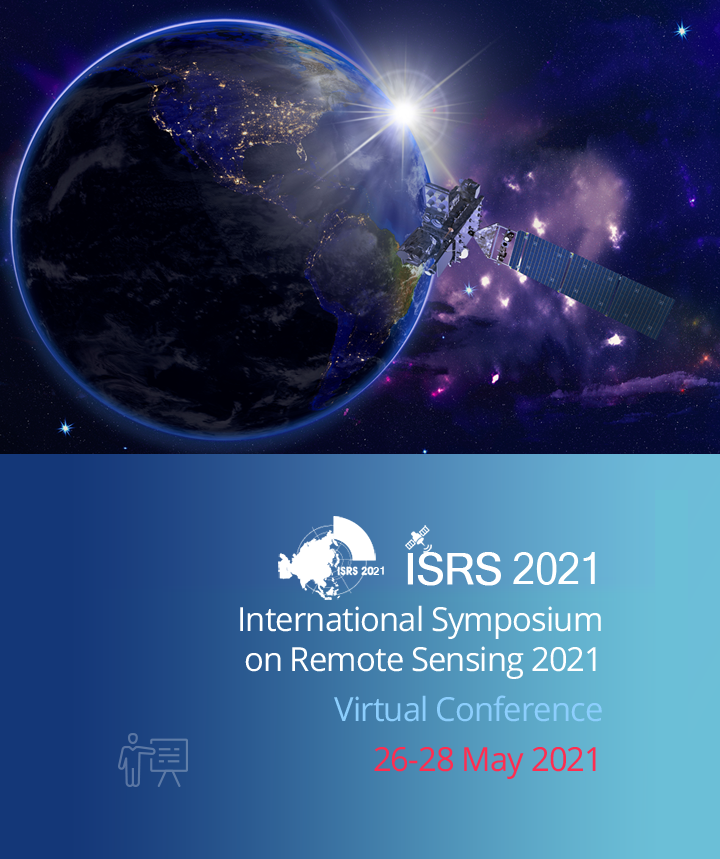Plenary Session
 Wednesday, 26 May 2021 13:30 ~ 14:30
(Chair: Prof. Sang-Eun Park)
Wednesday, 26 May 2021 13:30 ~ 14:30
(Chair: Prof. Sang-Eun Park)
 |
Prof. Taejung Kim Inha University, Korea Title: Generation of User-Friendly Image Products for New Korean Land Observation Satellites On 22nd March, 2021, a Korean new satellite, CAS500-1, has been launched successfully. This satellite has a land observation mission over the Korean peninsula. It has a high resolution electro-optical camera that acquires images with one panchromatic band at GSD (Ground Sampling Distance) of 50cm and four multispectral bands at GSD of 2m. Next year, a new satellite with identical specifications, CAS500-2 will be launched. The mission will be performed efficiently through dual satellite operation. The Ministry of Land, Infrastructure and Transportation of the Government of Korea is responsible to utilize the satellites and their image data. In order to achieve the mission objectives, the ground station for CAS500-1/2 has been developed to generate user-friendly image products. The goal was to produce image products that users can utilize directly to their applications without additional image processing and manipulation. Raw satellite images are processed to enhance their geo-location accuracy from several meters to around one meter. They are then ortho-rectified using nationwide DEM (Digital Elevation Model) at 5m spacing. They are further clipped to fit in the NGII (National Geographic Information Institute) 1:5000 mapping grid, which is the standard framework for Korean geospatial information construction. In this way, users can directly align CAS500 image products with 1:5000 maps and other geospatial information. The presentation will introduce CAS500-1/2 satellites, the development of ground processing facilities, processing steps for user-friendly image products, and the quality of automatically generated image products. The presentation will also address future plan to generate additional user-friendly image products by implementing ARD (Analysis Ready Data) processing and by widening the service region. |
VOD |
 |
Prof. Sashiko Hayashida President of RSSJ, Nara Women’s University, Japan Title: Remote Sensing in the era of “Anthropocene” ~ Observation of atmospheric trace species emitted by human activities ~ The current era is known as "Anthropocene", which is the time of significant human impact on Earth's geology and ecosystems. Remote sensing technology can reveal the human impact at various aspects. I am an atmospheric scientist, and I have been working on satellite data analysis to understand how the changes in the atmospheric minor species, such as pollutants and greenhouse gases, were caused by human activities. However, there are some difficulties in analyzing the data of atmospheric minor species observed by satellite sensors. Most of the minor species are observed by using absorption of the solar radiation; thus, only the atmospheric column amount can be observed. In order to interpret the obtained data of those species, we need to know their lifetimes due to chemical formation and destruction, and transport processes that vary with altitude. Without knowing their characteristics, just looking at the observed images alone may lead to misunderstandings. In this presentation, I will introduce three examples from my previous research. The first is a case of a temporary improvement in air pollution after a nationwide lockdown to prevent the spread of COVID-19 in India last year. The second is a study of seasonal changes in methane concentrations obtained over South Asia. The third is an example of increased ozone in the lower troposphere over China. I hope those examples will give you an idea how to manage the satellite data for atmospheric minor species. Recently, various chemical species observed by new sensors have been registered in Google Earth Engine, and can be utilized together with surface observation data. In the future, this kind of data will be used more widely. I hope that many people will be able to make good use of these data. |
VOD |
 |
Prof. Fuan Tsai National Central University, Taiwan Title: Remote Sensing and Geospatial Information in Taiwan—Status and Prospects During the past decades, Remote Sensing and Geospatial Information have progressed significantly and are still developing fast in the academic, governmental and private sectors. This presentation provides a brief overview on the status and prospects of Remote Sensing and Geospatial Information in Taiwan. The presentation describes and discusses the current and future developments in different perspectives, including outlooks in geospatial education, space, airborne, and ground-based sectors. Among them, The 3rd Phase Long-term Space Program at the National Space Organization (NSPO) will develop and deploy multiple earth observation (EO) satellite constellations, including 6 Formosat-8 series satellites with 1-m resolution optical sensors and dynamic video recording, sub-meter resolution Formosat-9 satellites, and two X-band Synthetic Aperture Radar (SAR) Formosat-10 satellites. Another important Remote Sensing infrastructure in Taiwan is the Resource Satellite Ground Receiving Station at the Center for Space and Remote Sensing Research (CSRSR), National Central University. It is a Direct Receiving Station (DRS) of several high-resolution and very-high-resolution satellites. With the high-performance system developed in CSRSR, it can provide seamless satellite tasking, acquisition and processing operations as well as value-added products and services, including Analysis Ready Data. The presentation will also demonstrate a few advanced and sophisticated applications in different domains. These examples include integrated and multi-scale monitoring for land-cover changes, disaster mitigation, land and infrastructure deformation; three-dimensional (3D) reconstruction from satellite, UAV, and close-range photogrammetry; HD (high-definition) map generation with MMS (Mobile Mapping Systems); and integration with relevant technologies such as AR/VR, IOT/AIOT etc. Finally, challenges and prospects of the remote sensing and geospatial information development in Taiwan will also be briefly discussed in this presentation. |
VOD |

